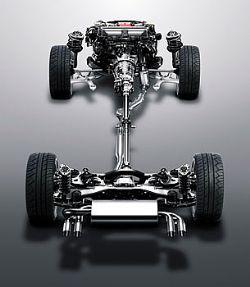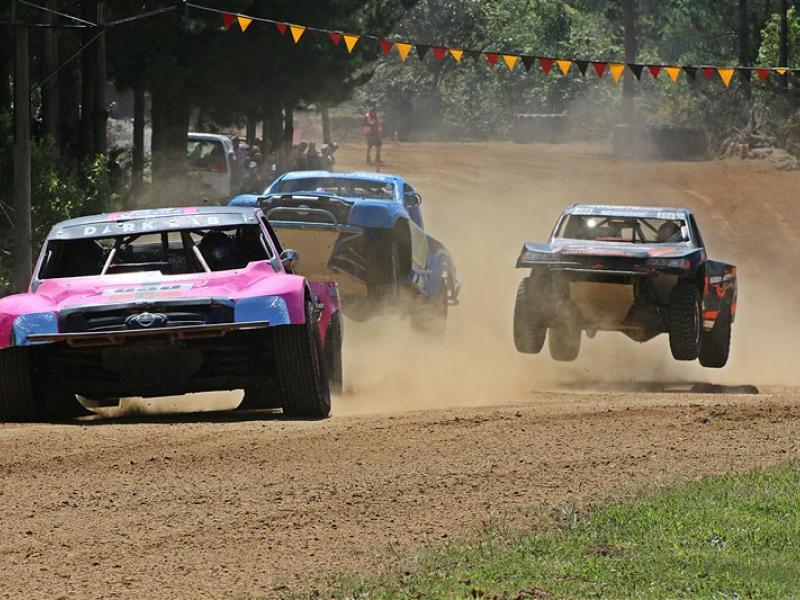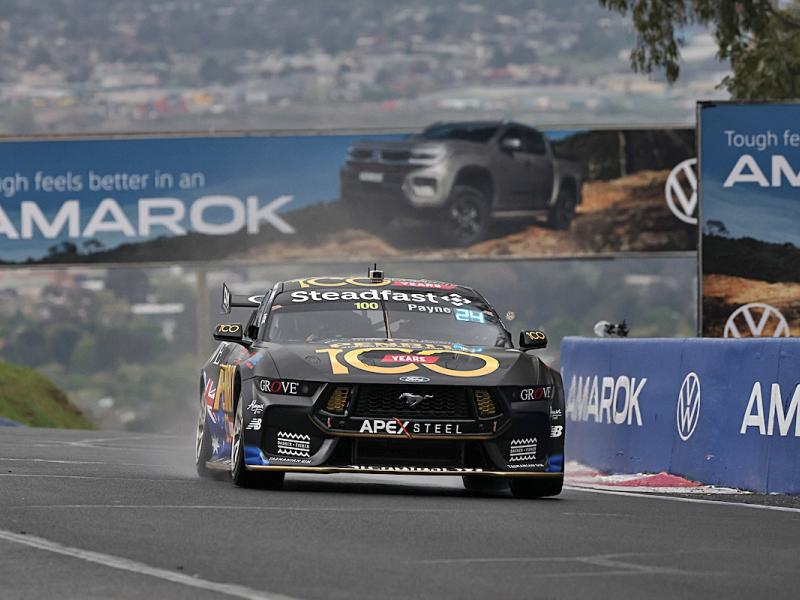Any suggestions the Impreza WRX STI might be compromised towards the main stream are quickly dispelled when you get behind the wheel, select Sport Sharp on the SI drive console and let out the clutch. With 15 more kilowatts than the old model – now 221 kW and a boost in torque from 392 Nm to 407 Nm, the STI soon lets its intentions be known. Dual Active Valve Control on both the intake and exhaust valves helps improve low-end torque while providing a strong power boost at high revs. Subaru’s own 6-speed manual transmission has been perfected for faster, more accurate and responsive shifts. The front differential adopts torque-sensitive LSD (limited slip differential) that excels in response to input torque; the rear differential employs a Torsen LSD that supports distribution of torque. Subaru Intelligent Drive (SI-DRIVE) regulates the Engine Control Unit (ECU) and the electronic throttle control, allowing the driver to select three different modes of driving: Intelligent; Sport; and Sport Sharp. The multi-mode Driver’s Control Centre Differential (DCCD) enables the driver to choose from different modes of control for the centre differential. This feature allows the driver to enjoy handling and manoeuvring as they desire, and it provides high levels of vehicle straight-line stability unique to the AWD configuration. The DCCD System is composed of the Steering Angle Sensor, Yaw rate and Lateral G Sensor, Stop Light Switch and other sensors and switches, Planetary Gear Type Center Differential with built-in LSD Clutch, and the DCCD Control Module. The timing of vehicle acceleration and LSD limited-slip differential are almost completely correspondent by using the existing Electromagnetic Clutch LSD System in combination with the new Torque-response Type of Mechanical LSD System in the LSD System. Which improves the vehicle controllability when under acceleration. The DCCD Control Module adjusts the limited-slip differential force in response to the motion of vehicles with reading out driving line imaged by drivers by the Yaw rate and Lateral G Sensor and the newly adopted Steering Angle Sensor. Because of this, understeering and oversteering are controlled, so closer our image of handling is realized. And also, tight corner braking phenomenon is reduced. In the MY08 Subaru Impreza STI, the DCCD is retained from the previous generation with the addition of some new features. The basic layout of DCCD has either an auto or manual function. When manual is selected, as the name implies the driver is granted full control of the centre differential setting. Alternatively when auto is selected, the DCCD Electronic Control Unit (ECU) employs various sensors to decide the best torque distribution for any given situation via control of the centre differential. The percentage of drive in both Auto and Manual modes can be varied from an even distribution (50% of available torque directed to the front wheels and 50% of available torque to the rear wheels) to a rear biased distribution (41% to the front and 59% to the rear). In auto mode there are three settings, AUTO + AUTO and AUTO –: AUTO: This mode is selected when the engine is started and is an all round mode that takes care of the majority of driving conditions (approx 45%/55% but will vary depending on conditions). AUTO +: When this mode is selected the torque split moves closer to 50%/50% but will still be able to be adjusted slightly by the ECU. AUTO + mode provides more front-end traction and safe cornering characteristics. AUTO – mode will control the centre differential to direct minimum torque to the front wheels via the centre differential, the split is approximately 41/59 percent front/rear, but once again, because the system is in ‘auto’ mode, this split can be varied depending on various conditions. AUTO – mode will give sporty driving experience with quick steering response as the front wheels have less torque affecting the steering and less drive through the front wheels that can cause understeer. The other main function is to change from auto to manual control of the centre differential. When in manual the basic principle of + and - is the same as auto (+ directs more torque to the front wheels and - directs less torque to the front wheels), with one important change. The driver is able to control the centre differential output from 50/50 all the way to 41/59 and anything in between. Once the level has been set, it will stay in that setting, regardless of conditions until changed by the driver. The multi-mode Vehicle Dynamics Control (VDC) also provides three different modes that the driver can choose from to experience a wider range of driving enjoyment, while always maintaining the safety features of VDC. The combination of SI-DRIVE, Multi-mode DCCD and Multi-mode VDC means that the new WRX STI can be configured, at the touch of a button, to create a bespoke driving experience to suit the conditions, skill and driving style of the STI driver. The brake system, coupled with the SuperSports ABS (antilock brake system) with EBD (electronic brake distribution), processes information fed from the G sensor, steering angle sensor, yaw rate sensor, and pressure sensor to deliver steady braking and control. It also works with the DCCD to ensure accurate braking on all four wheels independently, minimizing deviations from the driver’s intended path. The Impreza WRX STI is available in two models. – The Impreza WRX STI at $59,990 and the Impreza WRX STI spec.R at $64,990.
New WRX STI sports electronic innovation
New WRX STI sports electronic innovation
Motorsport
Monday, 17 March 2008






